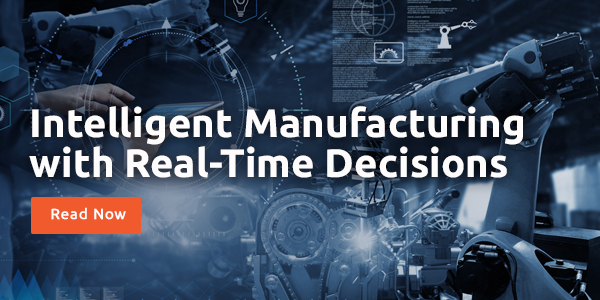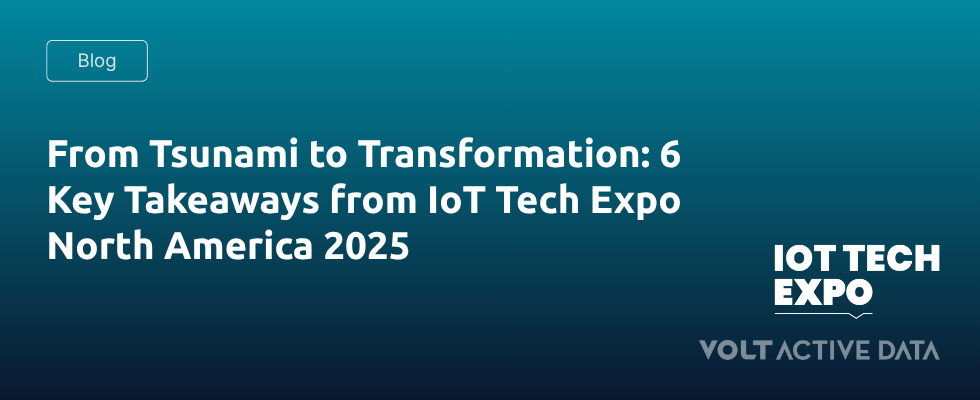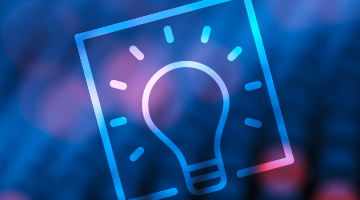Key Takeaways
- Edge computing is becoming the primary point of value creation in real-time systems, transforming from the ‘last mile’ to the ‘first point of value creation.’
- The combination of AI and IoT is a powerful force driving industrial transformation, enabling autonomy and responsiveness across various applications.
- Predictive maintenance is maturing with smart sensors and edge AI, shifting from time-based schedules to data-centric scheduling, but still requiring expert oversight.
- Self-healing systems are essential for resilience in complex edge networks, enabling automatic diagnosis, adaptation, and recovery in dynamic environments.
- Agentic AI, where AI agents make real-time decisions based on context and data, is emerging, facilitating autonomous operations like those in no-lights factories.
Last week’s IoT Tech Expo North America 2025 was more than just a showcase of cutting-edge technology—it was a resounding wake-up call about the exponential acceleration of connected devices, edge intelligence, and the rising tide of real-time, data-driven decision-making. Through provocative keynotes and deep-dive panels, one message rang loud and clear: Industrial IoT, AI, and edge computing are converging, and enterprises must prepare now—or be left far behind.
Here are the key takeaways from this year’s standout sessions and discussions.
1. Edge Is Now the Center
Viet Nguyen, President of 5G Americas, framed the conversation with a provocative challenge:
“How do you prepare for this intelligent machine that’s arriving?”
He noted that the global IoT market is expected to surpass $800 billion in revenue by 2040, with a projected 400% surge in edge devices over the next five years. But this surge comes with complexity: thousands of distributed nodes to manage, coordinate, and secure.
Nguyen argued that edge computing is no longer the “last mile”—it’s rapidly becoming the “first point of value creation” in real-time systems. As enterprises look to act on data the moment it’s created, the edge becomes the new control plane, not just a data source.
2. AI + IoT = A Power Couple
The fusion of AI and IoT was a major theme throughout the expo, with speakers describing the combo as a “power couple” driving industrial transformation.
Ericsson’s VP of Emerging Technologies Mischa Dohler, in a session on networks and automation, put it bluntly:
“There’s a huge tsunami coming… when networks, devices, and applications come together in a business-friendly way, magic happens.”
AI at the edge was positioned not just as an optimization layer, but as a fundamental enabler of autonomy and responsiveness. The expo revealed how this marriage of AI and IoT is enabling everything from anomaly detection in factories to agentic decision-making in lights-out manufacturing.
3. Predictive Maintenance Is Growing Up
In the industrial track, one panel tackled the evolution of predictive maintenance—a use case now maturing thanks to smart sensors and edge AI.
Arnold Martin, Director of Process Control Technology at Air Liquide USA, shared a compelling story:
“We used predictive analytics on our big compressors. One anomaly led to a global recall for a client—we caught it early with instrumentation, not traditional data. It would have become a massive problem.”
He emphasized the move away from time-based preventive maintenance toward data-centric scheduling, but with caution:
“You still need experts. A false positive can be as costly as a missed failure. We use what I call ‘practical edge technology.’ Not bleeding edge—because undoing it can be just as expensive.”
Apurva Meher, Head of Software Engineering, Intelligent Vehicles & MES, at Ford Motor Company, added an important nuance:
“Preventive and predictive are different. Predictive is dynamic—based on heuristics, machine learning, AI. Preventive is static.”
Amir Kashani, Director AI and Digital Product Development at Stanley Black & Decker, Inc., reminded the audience that true predictive systems must also consider total cost of ownership and application-specific nuances:
“You can’t just have one model for everything. You need context and class-specific intelligence.”
4. Self-Healing Systems and the New Resilience
As edge networks become more complex and distributed, resilience is no longer optional—it’s foundational.
Several sessions highlighted the rise of self-healing systems that can automatically diagnose, adapt, and recover in response to changing environments. These self-managing systems are constantly adapting. This is especially critical where systems are deployed in hard-to-reach places.
This vision aligns with the emerging need for autonomous operations and always-on reliability, particularly in sectors like manufacturing, energy, and transportation.
5. The Rise of Agentic AI at the Edge
A phrase heard more than once throughout the expo was “Agentic AI”—referring to AI agents capable of making real-time decisions based on context, objectives, and data streams.
In one session centered around the manufacturing sector, Leo Rajapakse, Global Head of Cloud & Advanced Technologies at Bimbo Bakeries USA, described how his company is moving toward no-lights factories, where:
“Agents look at the data being generated and make decisions—like shutting down valves—without a person there to do it.”
Moshe Shadmon, founder and CEO of AnyLog, took it further, describing a virtualized edge layer that lets you interact with distributed data as if it were centralized:
“We create a virtual database across the edge. There’s no replication. You query the source data using SQL in real time.”
This avoids the latency and cost pitfalls of moving data to the cloud—and makes the edge a true decision-making layer.
6. Data Is the New Human (And the New Problem)
No conversation at the expo was complete without tackling the elephant in the room: data overload.
From messy data pipelines to legacy systems, the complexity of managing and extracting value from IoT data is only increasing. As Apurva noted:
“Data is like humans—it comes in all shapes and forms. It’s ever-changing, and what you do with it is ever-changing.”
Other key insights on data strategy included:
- Clean your data at the source to reduce latency and improve accuracy
- Desilo your data, not to centralize it for its own sake, but to take meaningful actions
- Focus on AI-boosting data, not just AI-ready data
The ultimate goal? Real-time intelligence that’s use-case-specific and business-outcome driven. As Volt Active Data’s Dheeraj Remella put it:
“Real-time means different things depending on who you ask. But for critical KPIs, milliseconds matter.”
Final Thoughts: Intentional Innovation
The prevailing theme of the expo wasn’t just tech for tech’s sake—it was intentional innovation. Start with the business problem. Know what decision you want to make. Then collect the right data and apply the right intelligence at the right time.
“Start with the why,” said Apurva. “The what and how will follow.”
For those wrestling with legacy systems, siloed data, or lagging responsiveness, the call to action is clear: Re-architect now for a future of distributed, intelligent decision-making. The tools are here. The tsunami is coming. Time to surf.




